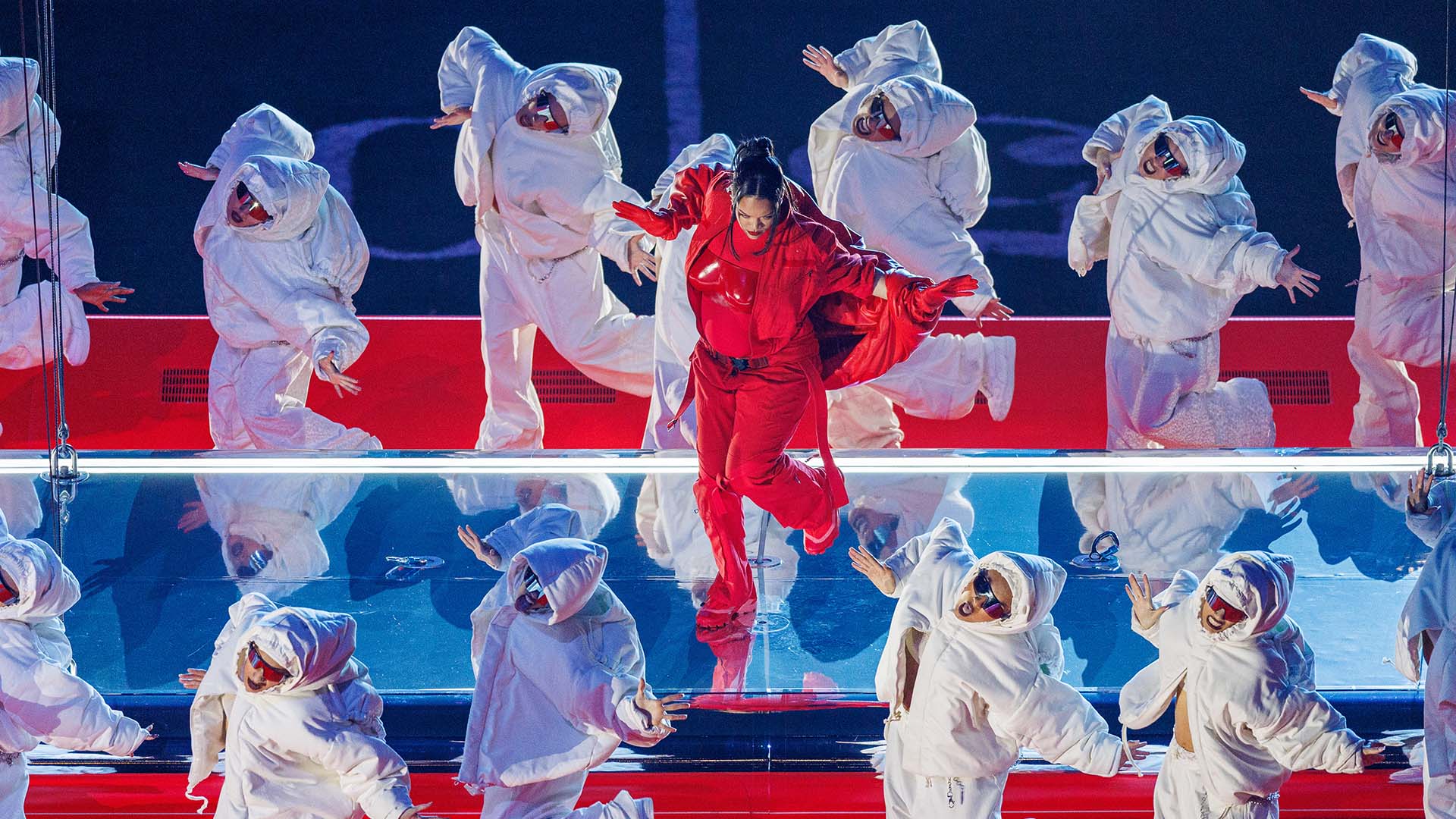
The Super Bowl Halftime Show from then to now
The Super Bowl Halftime Show is a cultural phenomenon that has set milestones within the music and entertainment industry, visually captivating audiences worldwide.

Initially, halftime spectacles were simple, featuring performances by college bands. The Grambling State University and the University of Arizona were in charge of the entertainment at the first Super Bowl in 1967 in Los Angeles.
Watch the 1967 Show
This trend persisted until 1976 when acts of greater production value were brought in. The Walt Disney Company took the reins on several shows, while 'Up with People' introduced the use of massive, removable stages on the field.
Watch the 1976 Show
In 1992, the NFL made a significant bet on a special show for the upcoming Winter Olympics. The venture fell short of expectations, with the broadcast losing 10 rating points to an episode of 'In Living Color' on FOX. A rejuvenation of the Halftime Show was imperative.
Watch the 1992 Show
Enter Michael Jackson, the King of Pop, who in 1993 transformed the Halftime Show. His performance was the first Show that saw people tune into just for the act, attracting an 8.6% increase in viewership from the previous year and that audience stayed right through to the end of the game.
Watch the 1993 Show
Jackson's performance commenced with an introduction by James Earl Jones, followed by a pair of doubles masquerading as the 'King of Pop' emerging from atop two jumbotrons. Moments later, MJ appeared on stage, remaining motionless for nearly two minutes.
Jackson kicked off his set with 'Jam', followed by a medley of 'Billie Jean' and 'Black or White'. The show reached its zenith with 'We Are the World' and 'Heal the World', featuring a choir of over 3,000 children. Michael Jackson had set a new standard for the Halftime Show format.

Musical superstars became the norm, marking the beginning of a new era. In 1996, Diana Ross elevated the production to unprecedented levels, incorporating dancers and even a helicopter into her act. Expectations continued to soar.
Watch the 1996 Show
With the Halftime Show's popularity came sponsors. Oscar Mayer and E-Trade were among the first to back the event, starting the tradition of assembling high-profile acts like Gloria Estefan, Stevie Wonder, Aerosmith, and NSYNC.
Watch 2001 Show
In 2002, U2 delivered a performance that transcended mere entertainment. With hits like 'Beautiful Day' and 'Where the Streets Have No Name', the band captured the sentiment of a nation reeling from the September 11 terrorist attacks.
Watch the 2002 Show
Controversy struck the Halftime Show in 2004 with Janet Jackson's infamous 'Nipplegate'. Her performance became notorious for a "wardrobe malfunction" when Justin Timberlake accidentally tore part of her corset, exposing one of her breasts.
The incident led to fines and complaints against the network, as well as the introduction of broadcast delays for live events. It also played a role in the creation and rise of YouTube.
Subsequently, the NFL opted for "safer" artists like Paul McCartney, The Rolling Stones, Prince, Bruce Springsteen, and The Who.
Watch the 2004 Show
While rock legends were a hit for a while, sponsor Bridgestone opted for a change: a return to pop stars. After criticism of The Black Eyed Peas, Madonna redeemed the show, striking a balance between musical quality and incredible spectacle.
Watch the 2012 Show
Beyoncé, Bruno Mars, and Katy Perry turned the Halftime Show into a coveted stage, but controversy resurfaced in 2016 when Rihanna, Jay-Z, and others declined to participate in solidarity with Colin Kaepernick's protests against racial injustice.
Watch the 2013 Show
In 2017, Lady Gaga made her act a statement, performing 'God Bless America' and 'This Land Is Your Land'. The Halftime Show reclaimed its signature appeal. Since then, major stars have headlined the event: JLo, Shakira, The Weeknd, Rihanna…
Watch the 2017 Show
For artists, the Super Bowl means exposure. While the NFL doesn't pay for their performance, the visibility the event provides results in a significant boost in sales. Rihanna, JLo, and Shakira's catalogs surged over 800% following their shows.
Watch the 2020 Show
Rihanna also holds the record for the most-watched show in Super Bowl history with 121 million viewers. Katy Perry follows with 118.5 million, and Lady Gaga with 117.5 million. Now, all eyes are on the next big act: Usher.
This will be the singer's second appearance on the Halftime Show stage. His first was as a special guest of The Black Eyed Peas in 2011, where he performed 'OMG' alongside will.i.am. Thirteen years later, Usher returns with the promise of a show filled with "energy, love, and connection with the entire world." Will he set a new record?
Watch the 2023 Show
- By: